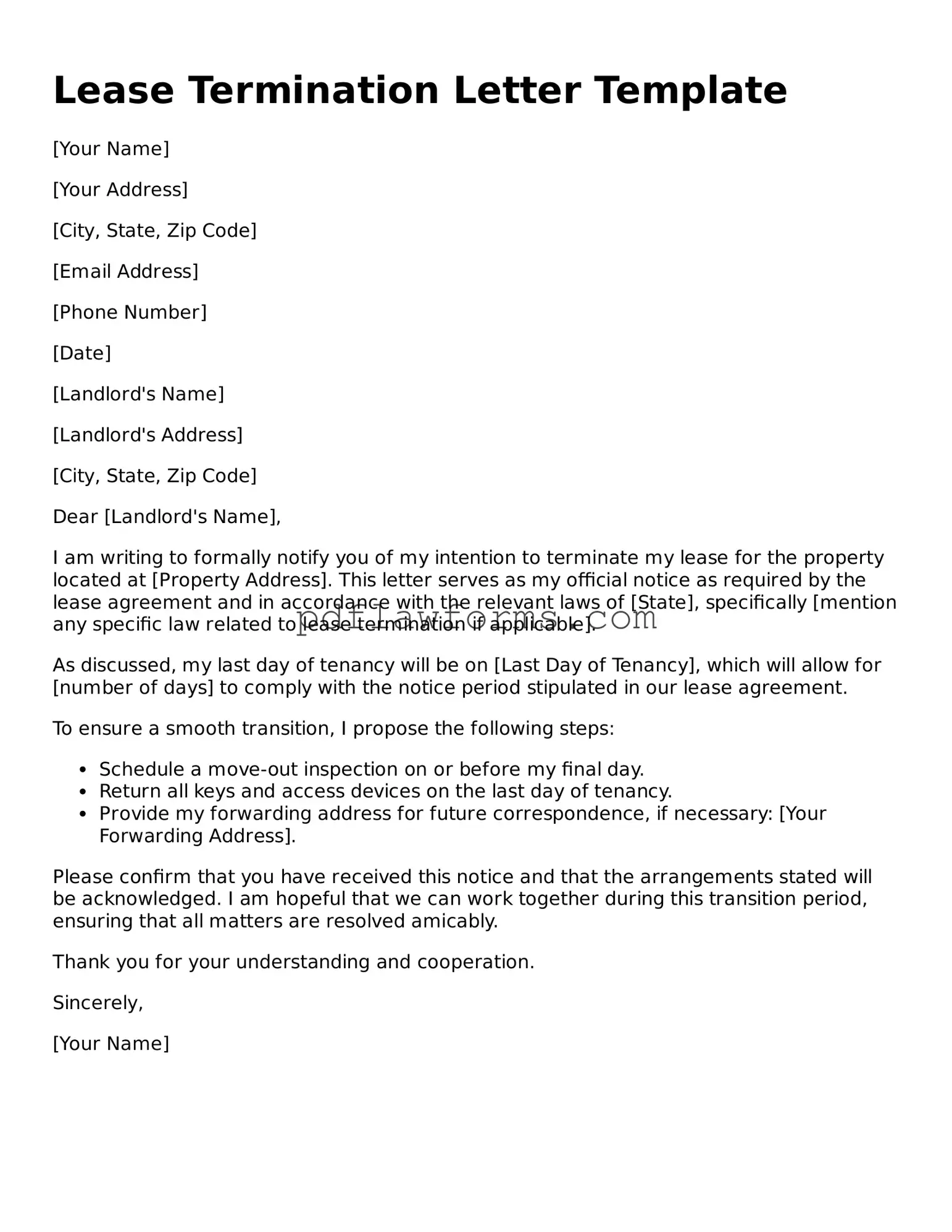Completing a Lease Termination Letter form can be straightforward, but many individuals make common mistakes that can complicate the process. One frequent error is failing to include the correct date. The date establishes the timeline for the termination and is crucial for both parties. Without it, confusion may arise regarding when the lease officially ends.
Another common mistake is neglecting to specify the address of the rental property. This detail is essential for clarity. If the property address is omitted, the landlord may struggle to identify which lease is being terminated, potentially leading to disputes.
Many people also forget to provide their full name and contact information. This omission can hinder communication. Landlords need to know who is terminating the lease and how to reach them for any follow-up questions or confirmations.
Some individuals mistakenly assume that a verbal notice is sufficient. However, a written Lease Termination Letter is necessary to document the request formally. Relying solely on a conversation may not hold up if disagreements arise later.
Additionally, failing to check the lease agreement for specific termination requirements can lead to issues. Some leases have particular clauses regarding notice periods or conditions that must be met. Ignoring these details may result in unintended consequences.
People often forget to sign the letter. A signature is vital, as it indicates the sender's agreement to the termination. Without a signature, the letter may be considered incomplete and could be disregarded by the landlord.
Another mistake is not providing a forwarding address for the return of the security deposit. This information is important for landlords to know where to send any remaining funds after the lease ends. Without it, tenants may miss out on their rightful deposit.
Some individuals fail to keep a copy of the letter for their records. Having a copy serves as proof of the termination request. In case of future disputes, this documentation can be invaluable.
Lastly, people sometimes submit the letter too late. Many leases require a specific notice period before termination. Sending the letter after this deadline can result in the lease continuing beyond the intended end date. Being aware of these timelines is essential for a smooth transition.
